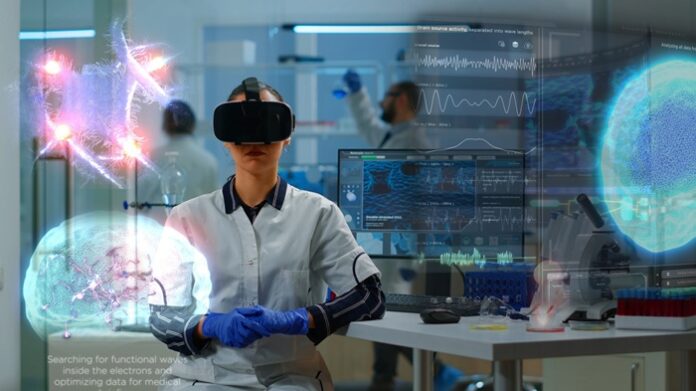The landscape of healthcare is continuously evolving. Technological advancements push the boundaries of what is possible and drive change. Three groundbreaking technologies are revolutionizing the medical world, offering new avenues for diagnosis, treatment, and patient care.
From artificial intelligence and telemedicine to robotics and ERP software, these innovations are reshaping the way healthcare is delivered and experienced. These advances provide insight into the future of medicine and the potential to improve outcomes for patients worldwide.
1. Artificial Intelligence in Healthcare
Artificial intelligence (AI) has emerged as a powerful tool in healthcare. It offers the ability to analyze vast amounts of medical data and extract actionable insights to inform clinical decision-making.
AI algorithms can interpret medical images, such as X-rays, MRIs, and CT scans, with a level of accuracy and efficiency that rivals or exceeds that of human experts. This enables earlier detection of diseases, such as cancer and cardiovascular conditions, leading to more timely interventions and improved patient outcomes.
AI-powered predictive analytics can identify patterns and trends in patient data, enabling healthcare providers to anticipate and prevent adverse events before they occur. For example, AI algorithms can analyze patient vitals and laboratory results to predict the likelihood of sepsis or other complications, allowing clinicians to intervene proactively and mitigate risks.
AI-driven virtual assistants and chatbots are enhancing patient engagement and communication, providing personalized support, health monitoring, and medication reminders.
As AI technology continues to advance, it holds the potential to revolutionize healthcare delivery by improving diagnostic accuracy, treatment efficacy, and patient satisfaction.
2. Telemedicine and Remote Patient Monitoring
Telemedicine and remote patient monitoring technologies change the delivery of healthcare by enabling virtual consultations, remote diagnostics, and continuous monitoring of patient health outside of traditional clinical settings.
Telemedicine platforms allow patients to connect with healthcare providers via video conferencing, telephone, or secure messaging, facilitating access to care from the comfort of home or remote locations.
This is particularly beneficial for patients in rural or underserved areas who may have limited access to healthcare facilities or specialists. Remote patient monitoring devices, such as wearable sensors, smartwatches, and mobile apps, enable real-time tracking of vital signs, symptoms, and medication adherence.
These devices provide valuable data insights to healthcare providers, allowing for early detection of health issues, timely interventions, and personalized treatment plans. For example, remote monitoring of patients with chronic conditions, such as diabetes or hypertension, can help prevent complications and reduce hospital readmissions by enabling proactive management and lifestyle modifications.
As telemedicine and remote monitoring technologies continue to evolve, they hold the promise of expanding access to healthcare, improving patient outcomes, and reducing healthcare costs.
3. Enterprise Resource Planning (ERP) Software in Healthcare
Medical device ERP software streamlines and optimizes healthcare operations, from patient scheduling and electronic health record (EHR) management to inventory control and billing.
ERP systems integrate key business processes and data across departments and facilities, providing a centralized platform for managing resources, workflows, and finances. This enables healthcare organizations to improve operational efficiency, reduce administrative burdens, and enhance patient care delivery.
ERP software facilitates compliance with regulatory requirements, such as the Health Insurance Portability and Accountability Act (HIPAA) and the General Data Protection Regulation (GDPR), by providing robust data security and privacy controls.
ERP systems also support decision-making and strategic planning by providing real-time visibility into key performance indicators, financial metrics, and operational trends. For example, ERP analytics dashboards enable healthcare executives to monitor patient volumes, resource utilization, and revenue cycles, allowing for data-driven insights and proactive management of healthcare delivery.
Conclusion
The rapid pace of technological innovation in the medical world is reshaping the way healthcare is delivered, experienced, and managed.
From artificial intelligence and telemedicine to robotics and ERP software, these cutting-edge technologies hold the promise of improving patient outcomes, enhancing operational efficiency, and expanding access to care.
Healthcare organizations continue to embrace these transformative technologies because of their benefits. They must prioritize patient-centered care, data security, and regulatory compliance to ensure the responsible and ethical use of technology in healthcare delivery.
By harnessing the power of innovation, collaboration, and continuous improvement, healthcare that benefits patients, providers, and communities can be achieved.

